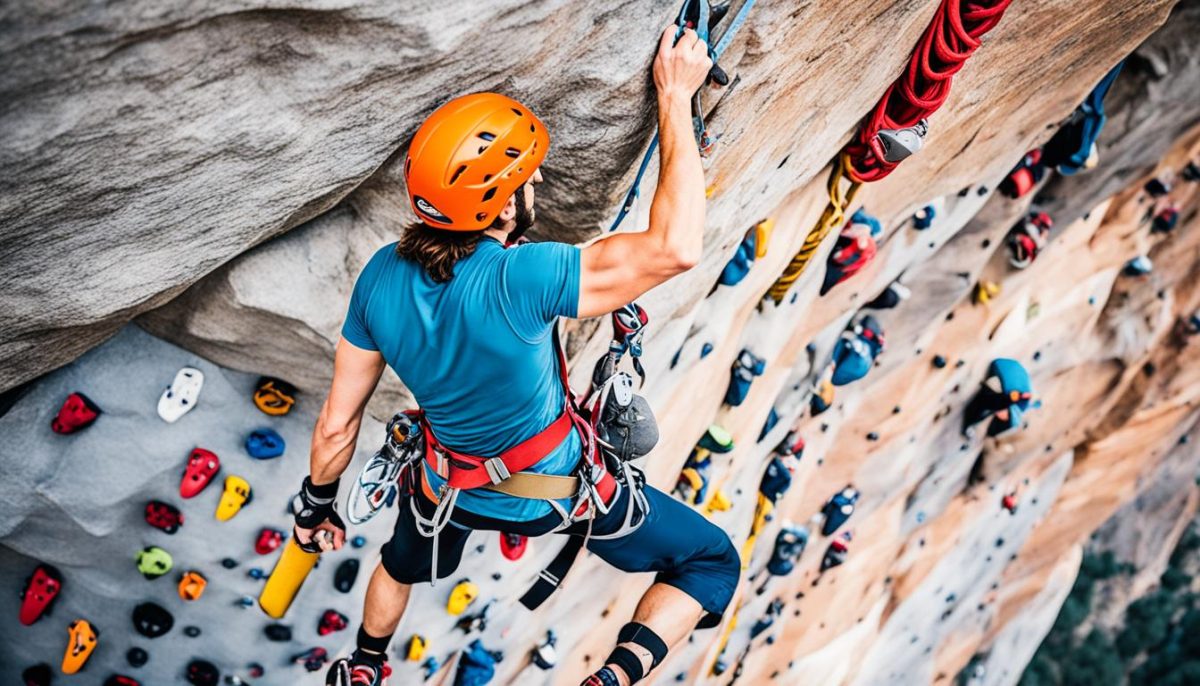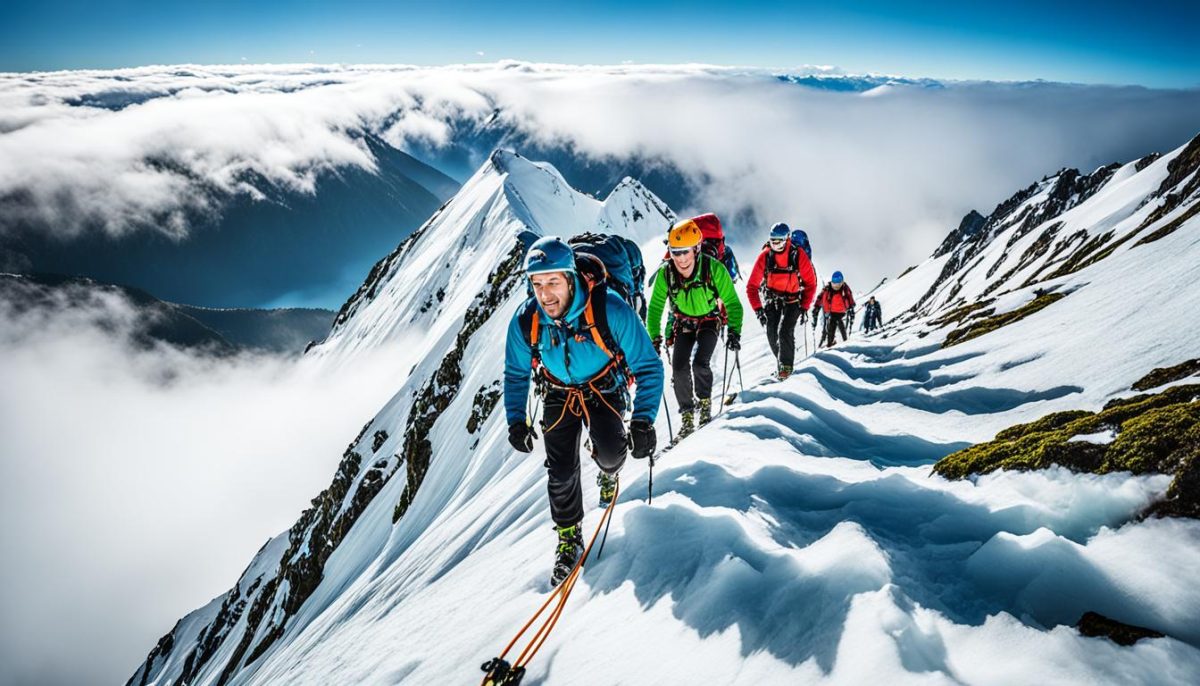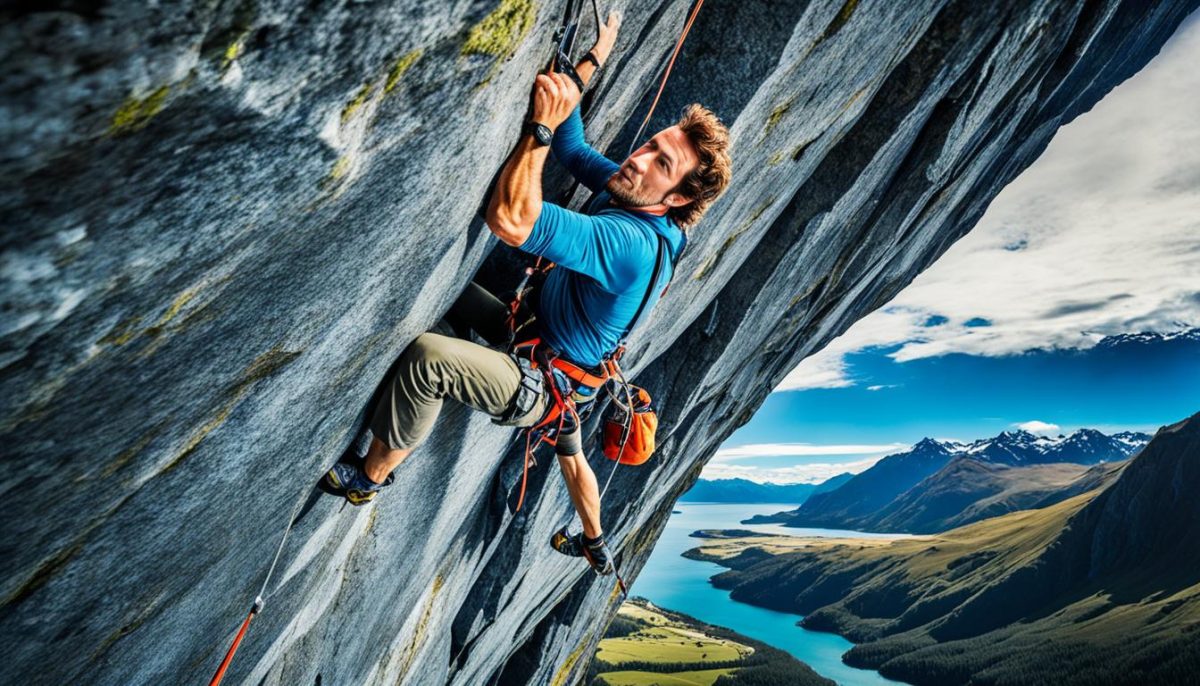Are you ready to conquer the heights and challenges of rock climbing? To ensure a successful climb, it’s crucial to pay attention to two key elements: comfort and safety. Proper gear and attire can make all the difference in your climbing experience. Let us guide you through what to wear when rock climbing so you can focus on enjoying the climb and reaching new heights.
Climbing gear is not just about looking the part; it’s about providing essential protection and support. The right equipment can enhance your performance and keep you safe. From climbing shoes that provide excellent grip on different surfaces to a well-fitting harness that secures you to the rope, each piece of gear plays a crucial role in your climb.
When it comes to clothing, prioritizing functionality and durability is key. Look for moisture-wicking materials that keep you dry and comfortable throughout your climb. Flexibility and freedom of movement are vital, so opt for clothing that allows you to stretch and reach without restrictions. Consider investing in climbing-specific clothing items such as base layers, climbing pants, and jackets designed for various climbing conditions.
Furthermore, understanding layering techniques can help you adapt to changing weather conditions during your climb. By adding or removing layers strategically, you can regulate your body temperature and stay comfortable throughout the day. Whether you need insulation for colder temperatures or wind- and water-resistant outer shells for unpredictable weather, layering techniques can ensure you’re prepared for any climbing situation.
So, gear up, choose the right clothing, and master the art of layering. With the perfect attire and equipment, you’ll be ready to conquer any rock face that comes your way. Remember, comfort and safety go hand in hand when it comes to rock climbing. Happy climbing!
Essential Gear for Rock Climbing
When it comes to rock climbing, having the right gear is essential for a safe and enjoyable experience. Whether you’re a beginner or an experienced climber, having the proper equipment can make all the difference. In this section, we’ll discuss the essential gear you need for rock climbing and provide you with valuable insights to help you make informed decisions.
Climbing Shoes
One of the most important pieces of gear for rock climbing is a pair of climbing shoes. Designed specifically for the unique demands of climbing, these shoes offer excellent traction and grip on the rock surface, allowing you to navigate even the most challenging routes. Look for shoes that fit snugly, providing a close connection between your foot and the shoe. This will ensure optimal performance and stability during your climbs.
Harness
A harness is another essential piece of gear that every rock climber needs. It is responsible for supporting your body weight and keeping you safely attached to the rope. When choosing a harness, consider factors such as comfort, adjustability, and durability. Look for a harness that fits well and distributes weight evenly to minimize discomfort during prolonged climbs.
Helmet
Safety should always be a top priority when rock climbing, and wearing a helmet is crucial for protecting your head from potential falls or loose rock. When selecting a helmet, choose one that is lightweight, well-ventilated, and meets industry safety standards. The helmet should fit properly and securely on your head to provide optimal protection.
Other Safety Equipment
In addition to climbing shoes, a harness, and a helmet, there are other important safety equipment items that you should have in your gear arsenal. These include climbing ropes, carabiners, belay devices, and quickdraws. These tools are used to secure yourself to the rock face and move safely along the route. It’s crucial to invest in high-quality, durable equipment and regularly inspect and maintain it to ensure its reliability.
Informed Decisions and Recommendations
When it comes to purchasing climbing gear, it’s important to make informed decisions based on your personal climbing goals and experience level. Research different brands and models, read reviews from other climbers, and consider seeking advice from knowledgeable professionals at your local climbing gym or outdoor retailer.
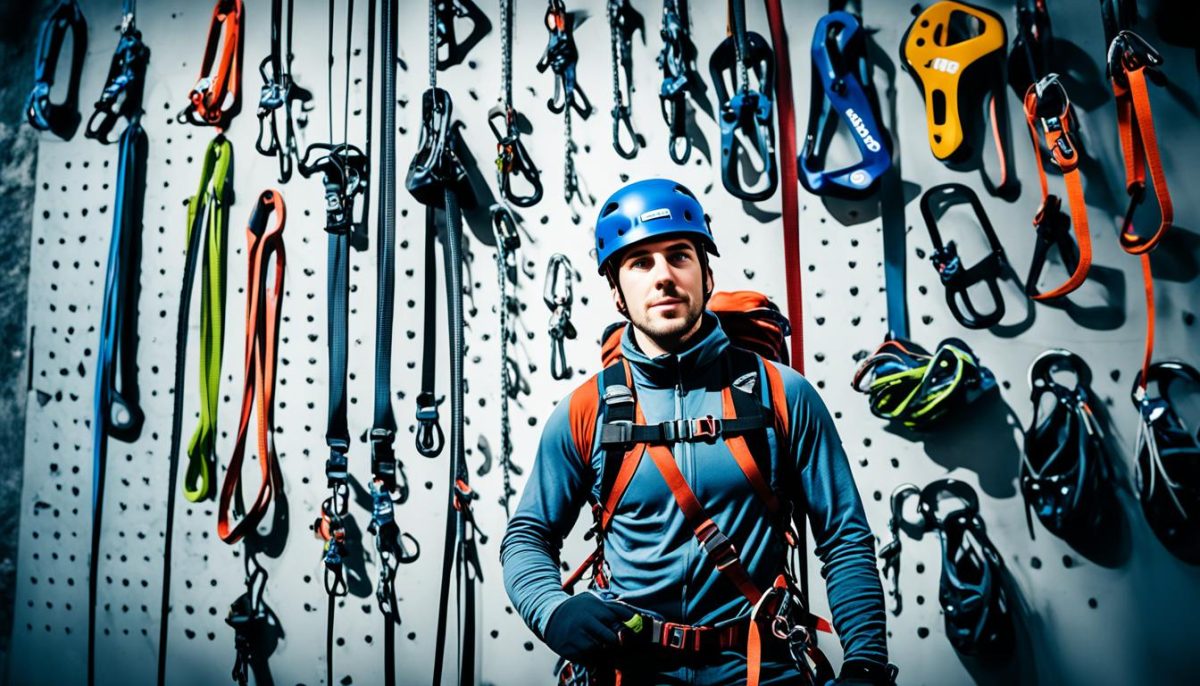
Choosing the Right Clothing for Rock Climbing
When it comes to rock climbing, choosing the right clothing is essential. The clothing you wear can significantly impact your performance, comfort, and safety on the wall. Here, we’ll explore some key considerations to keep in mind when selecting your climbing attire.
The Importance of Moisture-Wicking Materials
Moisture-wicking materials are a game-changer when it comes to climbing clothing. These fabrics are designed to pull sweat away from your body, keeping you dry and comfortable throughout your climb. Look for clothing made from materials such as merino wool or synthetic blends like polyester or nylon. These fabrics are known for their excellent moisture-wicking properties.
Flexibility for Unrestricted Movement
Rock climbing requires a wide range of motion, so flexibility is crucial in your clothing choices. Opt for garments that offer stretch and allow for unrestricted movement. Look for pants or leggings made from a blend of spandex and nylon and shirts with added elastane for that extra stretchiness.
Durability for Long-Lasting Performance
Climbing can be rough on clothing, with abrasive surfaces and potential snagging hazards. Therefore, durability is key. Choose clothing made from durable fabrics that can withstand the demands of climbing. Reinforced knees on pants and reinforced stitching are excellent features to look for.
Now, let’s take a closer look at some specific clothing items that are well-suited for different climbing conditions:
Base Layers: Base layers are your first defense against the elements. Look for moisture-wicking base layers made from synthetic materials or merino wool. These will keep you warm in colder conditions and help regulate your body temperature when it’s hot.
Climbing Pants: Climbing pants should offer both flexibility and durability. Look for pants with a gusseted crotch and articulated knees to provide freedom of movement. The fabric should be stretchy and quick-drying.
Jackets: Jackets are crucial for protecting yourself from the elements. Choose jackets made from lightweight, water-resistant materials to keep you dry during unexpected rain showers. Look for designs with adjustable hoods and cuffs for added versatility.
Remember, comfort and functionality are key when choosing your climbing clothing. By selecting clothing that meets these criteria, you’ll be able to move with ease, stay dry, and focus on the excitement and challenges of the climb. Happy climbing!
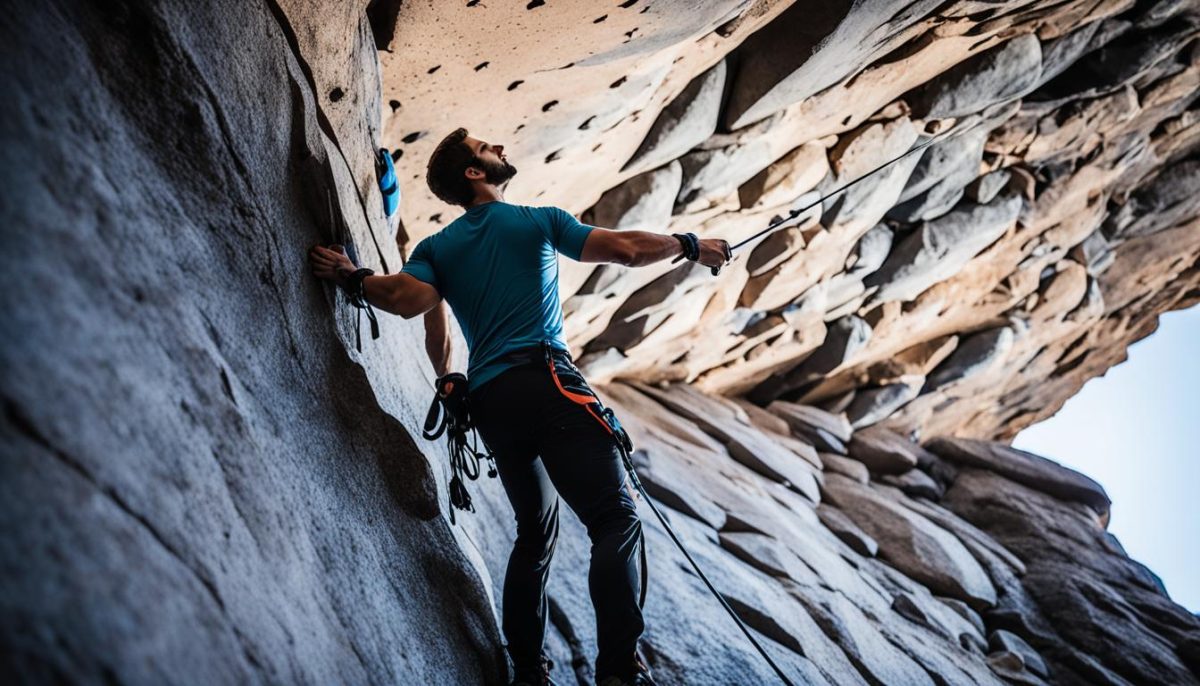
| Clothing Item | Material | Features |
|---|---|---|
| Base Layers | Moisture-wicking synthetic materials or merino wool | Regulates body temperature, keeps you warm in colder conditions |
| Climbing Pants | Stretchy, quick-drying fabric | Flexibility, durability, gusseted crotch, articulated knees |
| Jackets | Lightweight, water-resistant materials | Protects against the elements, adjustable hoods and cuffs |
Layering Techniques for Climbing in Various Conditions
When it comes to rock climbing, layering your clothing is key. By utilizing effective layering techniques, you can adapt to the ever-changing weather conditions and ensure optimal comfort throughout your climb. Layering techniques allow you to regulate your body temperature and stay dry, no matter if you’re facing scorching heat or freezing cold.
The first layer, also known as the base layer, plays a crucial role in moisture management. Opt for moisture-wicking materials that will keep sweat away from your skin, keeping you dry and comfortable during intense climbs. Remember to choose a base layer that fits close to your body for maximum efficiency.
The next layer, the insulating layer, provides warmth. Look for lightweight, yet insulating materials that trap heat while allowing for breathability. Fleeces or down jackets are popular options for this layer, as they provide excellent insulation without sacrificing mobility. It’s important to note that the thickness of this layer will depend on the weather conditions you’ll be facing.
The last layer, the outer shell, is the barrier that protects you from wind, rain, and snow. Your outer shell should be windproof, waterproof, and breathable to shield you from the elements while still allowing moisture to escape. Consider investing in a jacket with adjustable features such as a hood, cuffs, and a hem to further ensure a snug and secure fit.

